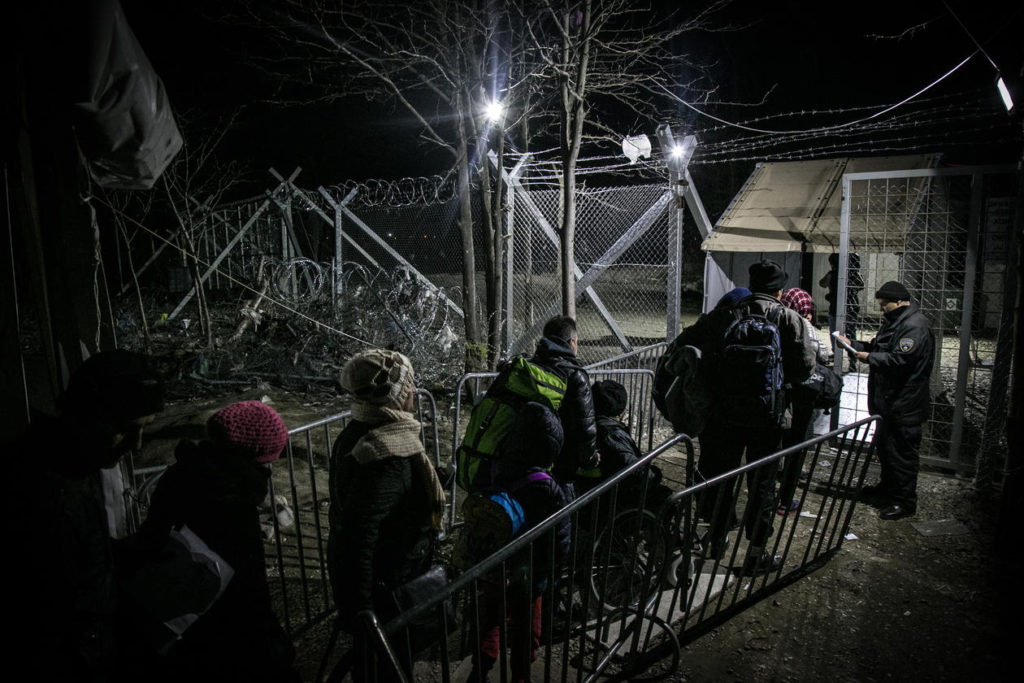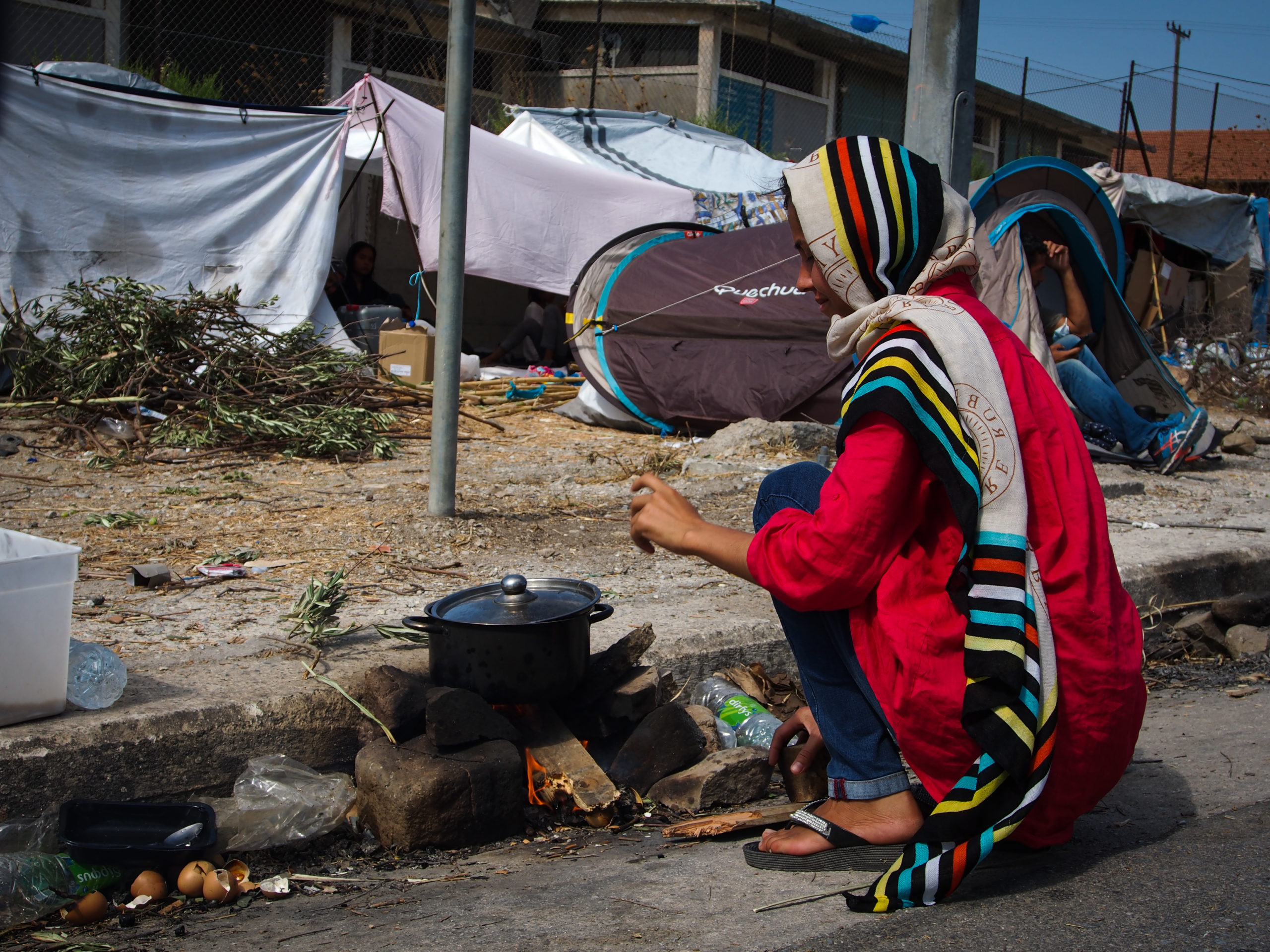By Andrew Fallone (Asile project)
The COVID-19 pandemic has made migrants’ access to international protection and their rights more difficult both in the EU and globally. This is especially true for undocumented migrants. Both asylum seekers and undocumented migrants have struggled to access public healthcare, unemployment benefits, and paid leave. Understanding the unique challenges faced by migrant populations is necessary to prepare future policy responses to health crises that prioritize migrants’ safety and wellbeing.

Closed borders, suspended asylum applications, and more pushbacks
The pandemic created manifold new challenges beyond its immediate health concerns for migrant populations. For instance, more restrictive migration policies were justified by the public health concerns. The initial response to pandemic in the Global North was to severely restrict asylum access by closing borders, suspending asylum applications, and expanding pushback activities.
In addition, many countries expanded the use of immigration detention by default (as opposed to the measure of last resort). Such crisis-led policy responses have accelerated incipient anti-migrant sentiments, with some politicians, government actors, and members of the public in EU Member States falsely portraying migrants as a source of disease.
Decline in refugee resettlement
Refugee resettlement rates plummeted during the pandemic. After initial border closures, many governments created exceptions for asylum seekers and increased state resettlement caps. However, actual resettlement numbers in 2020 reached less than one-third of their 2019 level. This illustrates how legislative changes must be paired with support to expand institutional capacity during times of crisis so that nations can successfully fulfill their legal stated resettlement quotas.
Asylum seekers wrongly labelled as ‘irregular migrants’
The stigmatization of irregular/undocumented migrants during the pandemic impairs the effective protection of these populations. The 2016 New York Declaration clearly expounds that nations must protect the human rights of all individuals, regardless of their migratory status.
Yet, during the pandemic, individuals seeking asylum have been wrongly labelled as ‘irregular migrants’.
Given the novel ways in which the pandemic created ancillary economic, agricultural, and political consequences for many communities, relying on preexisting status determination mechanisms may be insufficient when responding to health crises. Those fleeing hunger and poverty may not adequately fit into the categories that current asylum mechanisms determine to be eligible for international protection.
Some broader challenges
The pandemic further exaggerated pernicious forced and mixed migration drivers. For instance, economic stagnation/slowdown has led to rising migration rates in West Africa. Nearly three million individuals in transit as the pandemic emerged became stranded globally, especially in the regions of Southeast Asia and South America.
In many cases, gender-based violence, early marriage, and school drop-outs increased. Migrants working in undeclared and/or informal sectors also increased. Some of those already working as day-wagers were particularly affected by the pandemic. Some of them had to sell their homes and other assets, others had to take on debt, while others were starving or had to decrease their food intake.
EU policy debates often ignore the impact of the disappearance of asylum seekers and undocumented migrants attempting to reach Europe on their family members.
The Missing Migrants Project of IOM highlights that families remaining in the in countries of origin have been severely affected by the death or disappearance of their relatives.
Governments in ‘countries of origin’ have another challenge – they had to address the increasing rates of migrant return globally. For instance, in India alone 5.8 million nationals have returned from abroad.
Promising practices and indicators
Adequately supporting migrant populations during a global health crisis entails removing barriers to access support systems, avoiding policies that place individuals at additional risk, and looking at the impact of crises beyond national borders.
Third-country nationals whose residency permits expired during the pandemic risked falling into irregular status, preventing them from accessing healthcare and unemployment support systems. To avoid this some EU Member States, such as Portugal and Italy, announced promising regularization programs. In addition, Ireland has announced its draft proposal to regularise undocumented migrants.
These regularization strategies follow the policy recommendations made by the United Nations addressing how the Global Compact for Safe, Orderly, and Regular Migration could provide guidance on responses to the pandemic.
Some EU Member States also released migrants from detention to prevent the spread of the virus in detention facilities, such as Spain, Belgium, Italy, Germany, the Netherlands, and the United Kingdom.
Finally, global remittance rates have not dipped as severely as was previously feared. Such a dip would have necessitated policy responses to support migrants’ families since one in nine people globally receive remittances.
Next Steps
To address the diverse challenges outlined above, the ASILE project has outlined numerous policy priorities. For instance, that pandemic response plans should include direct outreach to migrant and asylum seekers communities.
The EU and Global leaders should focus on poverty eradication and development that is not predicated upon migration management. In addition, any barriers to access to health need to be removed.
Public health facilities should have clear firewalls and not be required to denounce those who are undocumented. This is very pertinent for the overall success of the vaccination campaigns. Such campaigns must include asylum seekers and undocumented migrants. Legislation to find missing persons must be expanded to include undocumented migrants.
Finally, nations should return to the commitment they made in Objective 8 of the UN Global Compact on Migration by promoting safe and regular pathways to migration. Similarly, Section 3.3 of the UN Global Compact on Refugees outlines that one solution to assuage the challenges that refugees and asylum seekers face is to expand the humanitarian corridors and other regular pathways to facilitate the safe and orderly arrival of asylum seekers.
[1] This work is based on the Centre for European Policy Studies (CEPS) Justice and Home Affairs (JHA) Unit panel discussion “The Impact of Covid-19 on Migrants and Refugees” presented at the CEPS Ideas Lab on 31 May 2021, as a part of the ASILE Project. The panel was moderated by Roberto Cortinovis (Researcher at the CEPS JHA Unit), and featured Michele Levoy (Director of the Platform for International Cooperation on Undocumented Migrants), Frank Laczko (Director of the IOM Global Migration Data Analysis Centre), Malthe Mulvad (Head of Advocacy at the Danish Refugee Council), and Nikolas Feith Tan (Senior Research at the Danish Institute for Human Rights), with Lina Vosyliūtė (Research Fellow at CEPS JHA Unit) featured as a discussant.








